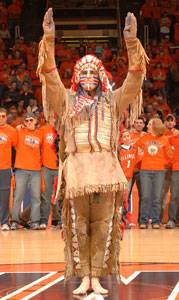
We’re bombarded with so much information on a daily basis that separating the wheat from the chaff is more than a full-time job. According to a new study from UC-San Diego, the average American consumes 34 gigabytes and 100,000 words over the course of 12 hours each day.
Before long, surely the pharmaceutical industry will provide a drug that will relieve the symptoms of information overload. But until then, we’ll have to make do on our own, sorting out what matters and needs to be remembered from what’s temporal and Tiger Woods-related.
In order to try to put the Aughts in some sort of context, we’ve attempted to collect the ten (or so) events that we feel were the most relevant to our communities. All the normal caveats about such arbitrary lists apply, but we hope that it’s informative and piques your interest. And we hope that you’ll share what you feel were the most relevant events of the decade in the comments.
<><><><><><><><><><><><><><><><><><><><><><><><><><><><><><><><><><><>
10. Child molestation in the twin cities (2001 & 2007)
This decade saw two major child molestation cases within Champaign-Urbana schools, revealing that this kind of thing can happen anywhere and only institutional controls can prevent it from happening everywhere.
 The two cases were Brady Smith (right) at Franklin Middle School in Champaign in 2001 and Jon White at Thomas Paine Elementary in Urbana in 2007. As devastating as these cases were to the individual victims involved, they also unfortunately revealed how justice in Champaign County can often be color-coded.
The two cases were Brady Smith (right) at Franklin Middle School in Champaign in 2001 and Jon White at Thomas Paine Elementary in Urbana in 2007. As devastating as these cases were to the individual victims involved, they also unfortunately revealed how justice in Champaign County can often be color-coded.
Jon White molested white girls and got 48 years in prison, based on his admission of a “tasting game” he played with the girls. His crimes were not limited to his tasting game, but his sentence was based on that as part of the plea bargain so the girls did not have to testify.
Brady Smith molested troubled black boys (his earliest victim dates from the late 1970s), but he received probation and a few hundred dollars in fines after a plea bargain. An old friend of his was assigned to the case. Even after he violated his probation, then State’s Attorney John Piland got mad at the probation officer for reporting it and waited six months before acting on it.
In both cases, there were clear warnings about Smith and White that were not acted upon by school officials. White had already been suspected of molestation in McClean County, but he was able to get a job in Urbana anyway. In Smith’s case, he molested boys for five years after it was first reported to the schools, and one boy even reported molestation after a no-contact order from his mother because of her suspicions.
Child molestation and unequal sentences happen everywhere. It’s too bad it happens in C-U as well. But at least we can use these cases as object lessons for why we need to continually monitor our local schools and justice institutions. — Dan Schreiber
<><><><><><><><><><><><><><><><><><><><><><><><><><><><><><><><><><><>
9. Smoking ban enacted in bars and restaurants (2007)
The ban was approved in both Champaign and Urbana in 2006 and took effect in early 2007. It’s kind of nice to not stink of cigarettes after a night out.
<><><><><><><><><><><><><><><><><><><><><><><><><><><><><><><><><><><>
 8. Overhaul of Green Street through campus (2000)
8. Overhaul of Green Street through campus (2000)
In 1999, by the time the Co-ed Cinemas on the 600 block of was finally shut down, the Campustown 2000 project was already well underway. Formed in 1996, the goal of the commission was to “to create a functional and aesthetic mixed-use area that was economically viable. This was achieved by relying on diversity and coorperation from in and around the Champaign-Urbana areas” according the a website owned by a company that goes by the name of PREPA.R.E, Inc.
In some ways, it completely succeeded. Just fifteen years ago, the now-two-lane-plus-a-turn road was a four lane drag racing strip. Potholes were so prevelant that walking down the sidewalk on rainy days meant dodging splashes the size of small waves. Parking was out of control; you could generally find something somewhere, but to a degree, it was a bit like the wild west — you never knew if your car was parked legally or not. And more than that, it was downright dir-tay. Seriously, it was nasty. It was stinky from the Boneyard, and junky from the garbage, and when it rained in the summer, mosquitos fucked like mad and infested the street to the point of needing citronella candles on the sidewalks.
But with that grimeyness, came a spirit of culture so far removed from the current Campustown, that it’s almost plain saddening to look back on it.
There were five — one, two, three, four, five — record stores within a three block strip of land. Three on the 600 block of Green St. alone. In addition, there were things to do. An arcade, a cinema, a head shop, poster shops, video stores (it still remains thank G-d), tons of restaurants — locally owned (Coslow’s, anyone?), and lots of bars. And what’s more — there were live music venues. Real ones. With promoters, competing for shows. Campustown was the cultural mecca of downstate Illinois.
And now, it’s nothing more than a well-lit strip of Chicago-esque commercial land, with good drainage.
Was it necessary? Probably so. But I’ll be damned if there will ever again be a time when you’ll be able to ride your bike to Campustown and spend literally hours on end there and not get bored. These days, most of us just avoid it. Not because of the kids — the kids were always there. We avoid it because the opposite is true now: there is nothing to do. — Seth Fein
<><><><><><><><><><><><><><><><><><><><><><><><><><><><><><><><><><><>
 7. Illini men’s basketball team reaches NCAA Championship Game (2005)
7. Illini men’s basketball team reaches NCAA Championship Game (2005)
Growing up in Urbana as a Purdue fan was about as close to being oppressed as a white boy like myself was ever going to get. Not only was I mocked on the playground, I was literally sucker punched in the back after Gene Keady’s 1988-89 Boilers upset the Flyin’ Illini on a (highly) questionable call at Mackey Arena. I am not lying. I was literally physically harmed because I was raised to cheer for Purdue. True story, depending on who you ask.
In a nutshell, I have grown to despise the Illini. The hiring of Bruce Weber (a former Keady assistant) made the taste a little less bitter, but nonetheless, for a fella like me to scream myself horse cheering for the Orange and Blue, the circumstances must have been pretty special. (See video below)
That word doesn’t do the 2004-05 season for the Illini its due justice. When, on December 1, 2004, the # 1 ranked Wake Forest team arrived in Champaign for a Top 5 showdown for the Big Ten / ACC Challenge, and were promptly handed their ass on a platter, we all got a glimpse at something truly spectacular: a real team with every piece in place to win a national title.
Everything was truly in place. A trio of sharpshooting guards, with an emotional leader to end them all. Dee Brown is still more famous than any player in Illinois history despite Deron Williams’ NBA All-star status. A 4 who could play the 5 and a 5 who could play the 4, Roger Powell and James Augustine cleaned the glass and put up the points to back it up. The bench was scary good too: Jack Ingram, Rich McBride, Warren Carter, Nick Smith, and Brian Randle all came off the pine to give the starters their needed rest each game, and for 29 straight, the Illini were undefeated.
29–0 to start the season. Ranked #1 from December 4 until April 4.
As for the rest, you likely know the story. The team lost to Ohio State in the last regular season game. After winning the Big Ten Tournament handily, the team was given the overall #1 seed in the Big Dance, and played in what is now know as the greatest comeback in the history of college basketball to propel the team to the Final Four:
As for the final game of the season, the team couldn’t handle Sean May and the rest of the frontcourt on the UNC Tarheels team. And the lore lives on. It was even documented in a Nike commercial:
In the end, second place nationally is nothing of which to be ashamed. And with the recruiting classes that Weber has coming down the pipe, you can expect a bit more of the same in the years to come. As a Boilermaker, I can’t say that I am pleased. — Seth Fein
<><><><><><><><><><><><><><><><><><><><><><><><><><><><><><><><><><><>
6. University of Illinois “Clout scandal” (2009)
Wow, was it only just this past May that this story broke? In just over six months, the Chicago Tribune‘s reportage of a few hundred less-than-qualified admittees (and the scumbag politicos to which they’re connected) have turned a university system on its ear. Now, after the resignation of seven of the nine members of the Board of Trustees, the Chancellor, and the President, everything’s cool, right? Not hardly. Maybe the ship will be righted by this time next decade. — Joel Gillespie
<><><><><><><><><><><><><><><><><><><><><><><><><><><><><><><><><><><>
 5. The Revitalization of Downtown Champaign
5. The Revitalization of Downtown Champaign
Sure, downtown Champaign is hopping now compared to the start of this decade — at least if you like to socialize on sidewalks at midnight. The Nietos, Tifani Moot, Cody Sokolski, Chris Knight, et al. have seen to that for (mostly) better, not worse. Today the downtown features more bars, coffee shops, and restaurants, but the number of retail shops (a handful) remains largely unchanged despite longtime success stories like Circles, Dandelion, Carries, Dragon’s Table, Exile on Main St., Skins-n-Tins, Jane Addams, and Christopher’s. It would be swell if the people responsible for building tall buildings would address the need for a grocery store — it might even make it easier for them to peddle pricey condos with a view.
Some people wonder if downtown offers enough things to do. A friend brought up a good point when discussing the transformation downtown Champaign has undergone since its glory days of the ’80s outdoor “mall”: “I just don’t understand why through the ‘revivals’ of past decades none of the porn theaters reopened as porn theaters.”
Jokes aside, the old Lox Stock & Bagel spot — a prime slab of storefront, one would think — did sit empty the entire decade. I suppose the rumor that the space is finally getting some sort of (gasp!) beer-based business signals that a new decade is upon us. Onward and upward! Downtown Champaign has to keep a step ahead of the Joneses in Urbana, after all. — Doug Hoepker
<><><><><><><><><><><><><><><><><><><><><><><><><><><><><><><><><><><>
4. Consent decree enacted (and revoked) (2001-09)
After eight years the infamous piece of federal litigation referred as the Consent Decree came to an end July of this year. For some of us, it seems like only yesterday that John Lee Johnson sued the Unit 4 School District in 2000 for racially segregating its tracked classes wherein fewer than 1% of all “gifted” students were African Americans. At that time, approximately 35% of all Unit 4 students were African Americans.
After a protracted legal battle, Unit 4 eventually acknowledged some of its shortcomings and agreed to enter a consent decree requiring them to address the institutionalized inequities it had contributed to over the decades. Up until his death in 2006, Johnson compared these inequities to those which prompted the Supreme Court’s Brown v. Board of Education decision. Though it is arguable how much actual progress Unit 4 has ultimately chosen to make as a result of Johnson’s actions, the consent decree’s influence over our community cannot be questioned. — Caleb Curtiss
<><><><><><><><><><><><><><><><><><><><><><><><><><><><><><><><><><><>
3. Kiwane Carrington dies by policeman’s bullet (2009)
It was a tragic, tragic event, no matter who you are. From Caleb Curtiss’ article on December 9:
“I’ll point out here that the community that has been affected by Rietz’s announcement is not confined to Mr. Carrington’s neighborhood, or to people who identify with his racial or ethnic makeup. The community I refer to consists, at the very least, of those who have even a minimal investment in the C-U community. All of us suffered a loss when Kiwane was killed. And no, I don’t just mean that all of us lost one of our own community members, although we did. I mean that those of us who see Carrington’s death as being related to race and class have lost that much faith in our city and in our police department, and that loss has indefinitely had an effect on those who do not recognize any racial connection whatsoever by virtue of the ideological rift it has caused.”
<><><><><><><><><><><><><><><><><><><><><><><><><><><><><><><><><><><>
 2. The Chief is retired (2007)
2. The Chief is retired (2007)
Both sides of the debate are about as entrenched as any dispute this side of Roe v. Wade or Hatfields v. McCoys, and the discussion ceased to be interesting or enlightening long before I moved here in late 2007. But still, The Chief comes up in conversation as much as any topic, whether it be on WDWS call-in shows or over lattes at Cafe Kopi.
I don’t have a horse in this race, but after having watched the Assembly Hall crowd cheer on an imaginary Chief at halftime of my first Illini game this fall, I have to say the whole deal was pretty creepy. It was kind of like on Twin Peaks when Leland Palmer dances with himself after his daughter died.
Here’s Dan Schreiber’s take from this past October, “The Sinner’s Guide to the Chief Debate.”— Joel Gillespie
<><><><><><><><><><><><><><><><><><><><><><><><><><><><><><><><><><><>
 1. Rob McColley runs for Urbana mayor (2008)
1. Rob McColley runs for Urbana mayor (2008)
A way out in Urbana there was a fella, a fella I want to tell you about, fella by the name of Robert McColley. At least, that was the handle his lovin’ parents gave him, but he never had much use for it himself. This McColley, he called himself the Mayor.
Now, that’s a name no one would self-apply where I come from, at least without the people’s vote. But then, there was a lot about this McColley that didn’t make a whole lot of sense to us. And a lot about where he lived, like-wise. But then again, maybe that’s why we found the race s’durned innarestin’.
They call Urbana the City of Hippies. I didn’t find it to be that exactly, but I’ll allow as there are some nice folks there. ‘Course, I can’t say I seen London, and I never been to France, and I ain’t never seen no queen in her damn undies as the fella says. But I’ll tell you what, after seeing Urbana and thisahere story we saw unfold — well, I guess I seen somethin’ ever’ bit as stupefyin’ as ya’d see in any a those other places, and in English too, so I can die with a smile on my face without feelin’ like the good Lord ripped me.
Now this story we about saw unfold took place back late 2008 — just about the time of our conflict with McCain and Obama. I only mention it ’cause some- times there’s a man — I won’t say a hee-ro, ’cause what’s a hee-ro?— but sometimes there’s a man. — Seth Fein








